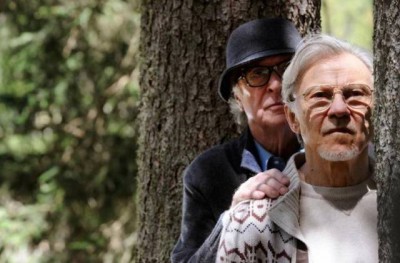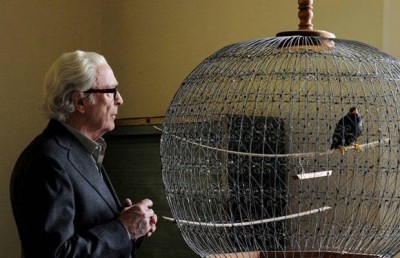
“Youth” – a film review by Gary Chew
You must let a few opening scenes of Youth filter through your brain to completely tune in to what’s up with it, then the film will flow over you like a cool swim in the pool on a hot summer day. This contemporary story is set at a mountain resort where only people with lots of time on their hands and even more money in their pocket seek to enjoy the passage of time. Fred Ballinger (Michael Caine) is a fictitious composer/conductor. He’s retired from his successful life with music. There’s only leisure time for him whether at this posh, well-elevated Swiss resort or not. His daughter Lena (Rachel Weisz), is along for the high altitude respite. She’s also his “Assistant” to whatever it is that her Father is up to.
 To say everyone registered at this secluded lodge is terribly bored and outwardly apathetic would be putting it mildly. Maestro Ballinger and Lena, along with two other guests, are trying stay in touch with their muse. Mick Boyle (Harvey Keitel) is a nearly retired, famous film director from California. Boyle has a coterie of film people with him to finish off the script for his next movie. The ensemble has the film all figured out — except for the ending.
To say everyone registered at this secluded lodge is terribly bored and outwardly apathetic would be putting it mildly. Maestro Ballinger and Lena, along with two other guests, are trying stay in touch with their muse. Mick Boyle (Harvey Keitel) is a nearly retired, famous film director from California. Boyle has a coterie of film people with him to finish off the script for his next movie. The ensemble has the film all figured out — except for the ending.
Another artistically inclined lodger down the hall is a movie star named Jimmy Tree (Paul Dano). Mr. Tree, also from California, is a bit younger than Lena. Maestro and Mick are each proceeding toward their 9th decade. That is surely why writer/director Paulo Sorrentino has titled his picture, Youth.
Ballinger is visited at the retreat by a stodgy emissary (Alex Macqueen) of Queen Elizabeth II. Her Royal Highness is insisting that the Maestro come back to the UK and conduct some of his vocal pieces called “Simple Songs.” As the title says, they are simple but known for being just right for students on their way to acquitting themselves as fine musicians.
“Nothing doing” is the Maestro’s response to the Queen’s bidding. Believe it or not, much of the film spins around that royal expectation and Ballinger not wishing to comply, as his “Simple Songs” were written for his wife to sing. In anger, Ballinger finally shouts at the emissary that his wife is “no longer here!” The emissary acquiesces and withdraws.
 Along the way Sorrentino plies us with, what I would call, unsentimental tidbits of wisdom about what remains for aging people like Ballinger and Boyle, some of the scenes surreal or maybe what you could call magically realistic. However they’re defined, the narrative and accompanying visuals for Youth’s composition, editing and cinematography nearly took my breath away.
Along the way Sorrentino plies us with, what I would call, unsentimental tidbits of wisdom about what remains for aging people like Ballinger and Boyle, some of the scenes surreal or maybe what you could call magically realistic. However they’re defined, the narrative and accompanying visuals for Youth’s composition, editing and cinematography nearly took my breath away.
Jane Fonda appears in cameo in the third act as a Desmondesque woman named Brenda Morel. Boyle has chosen her to head his cast in the new picture. The scene is just Fonda and Keitel. When Brenda tells Mick she won’t play the part, perhaps you’ll recall Gloria Swanson “readying for her close up,” except that Brenda uses language more apt to be heard in a movie released in 2015 than 1950.
Two classical trained professionals appear in the movie as themselves: Sumi Jo, the South Korean lyric coloratura and Victoria Mullova, the Russian violinst.
Youth is one of the most moving films I’ve seen this year, and one of the best. You won’t be inclined to just jump up from your seat and head for the exit when the closing credits roll. How it will fare with the competition is difficult to measure; it’s truly an art film, but one that doesn’t distance itself so much from the moviegoer with popular tastes. What Youth is about is what it’s all about for anyone … the young and old, the rich and poor, as well as the artful and the artless. And what a movie it is for Caine and Keitel to leave as a legacy for the fans each actor has accumulated.
- Movie Review: ‘The Glorias’ - September 28, 2020
- Movie Review: ‘I’m Thinking of Ending Things’ - September 10, 2020
- Movie Review: ‘The Burnt Orange Heresy’ - August 31, 2020

